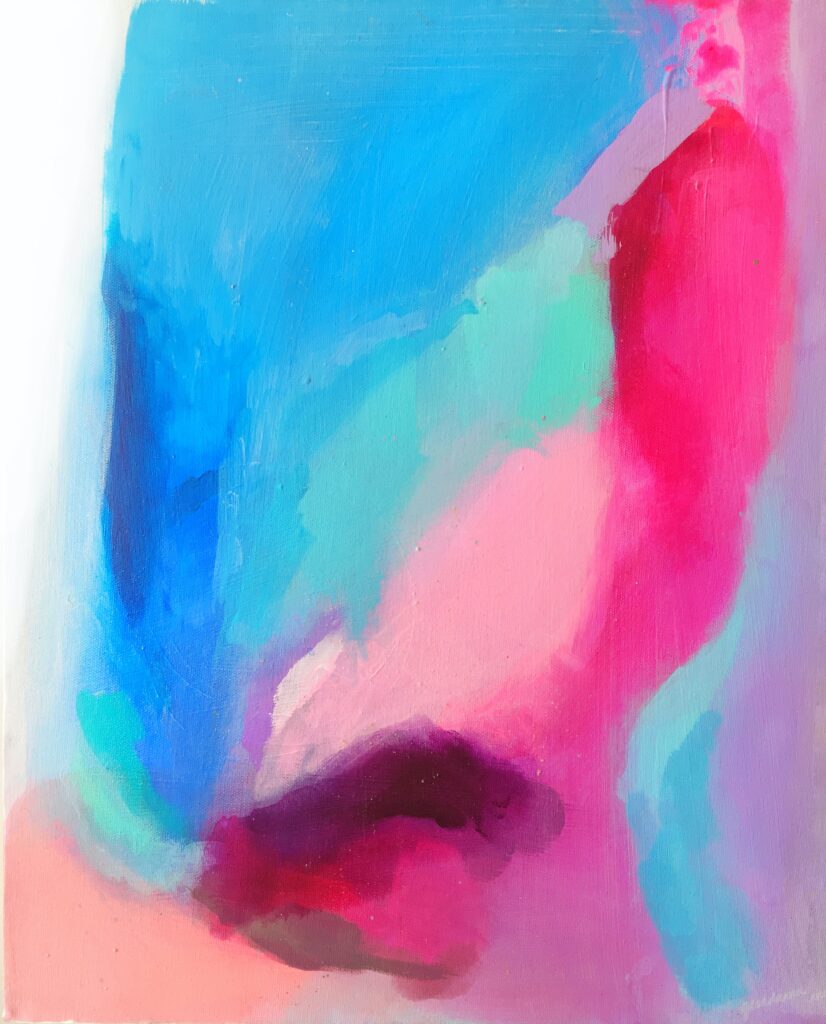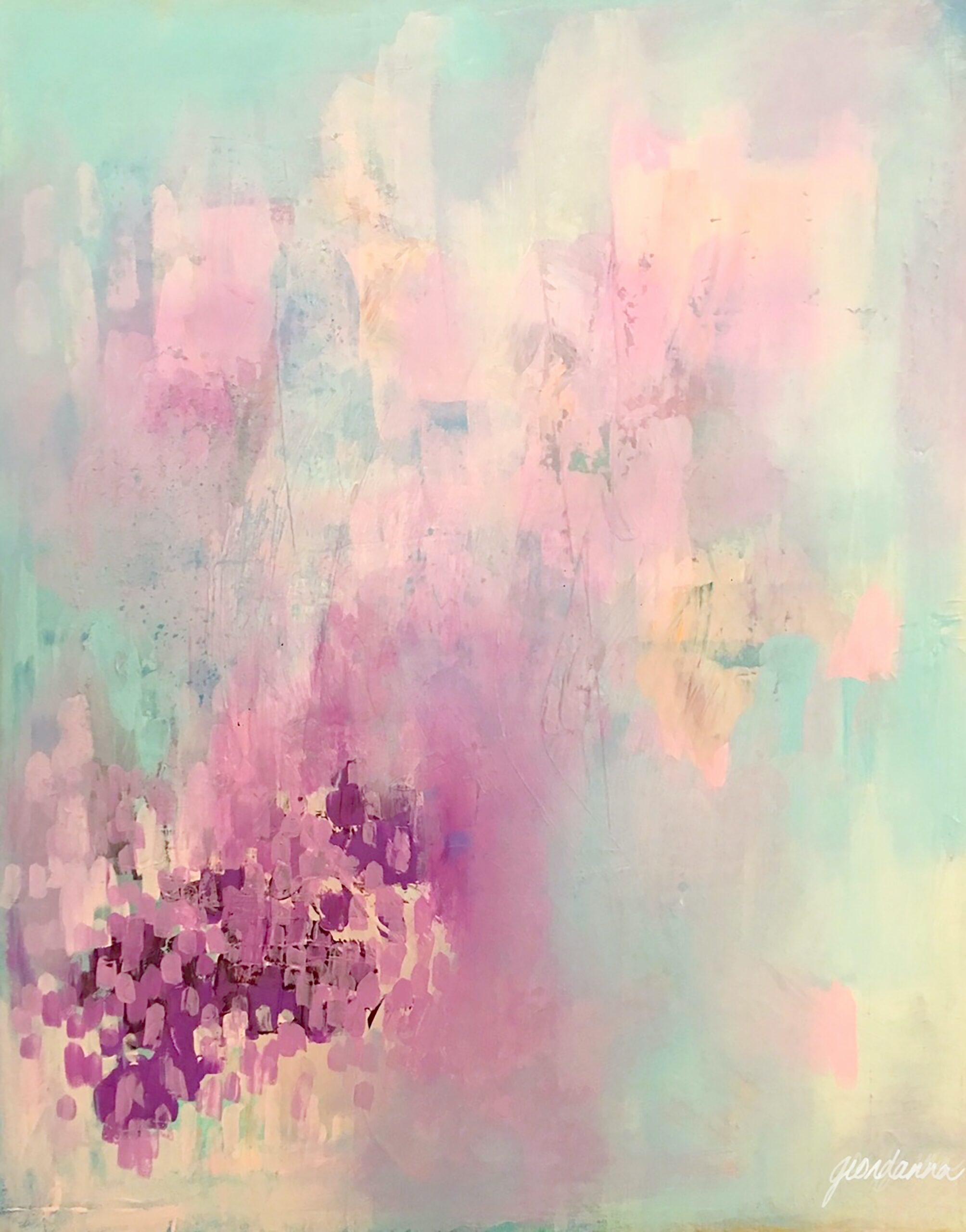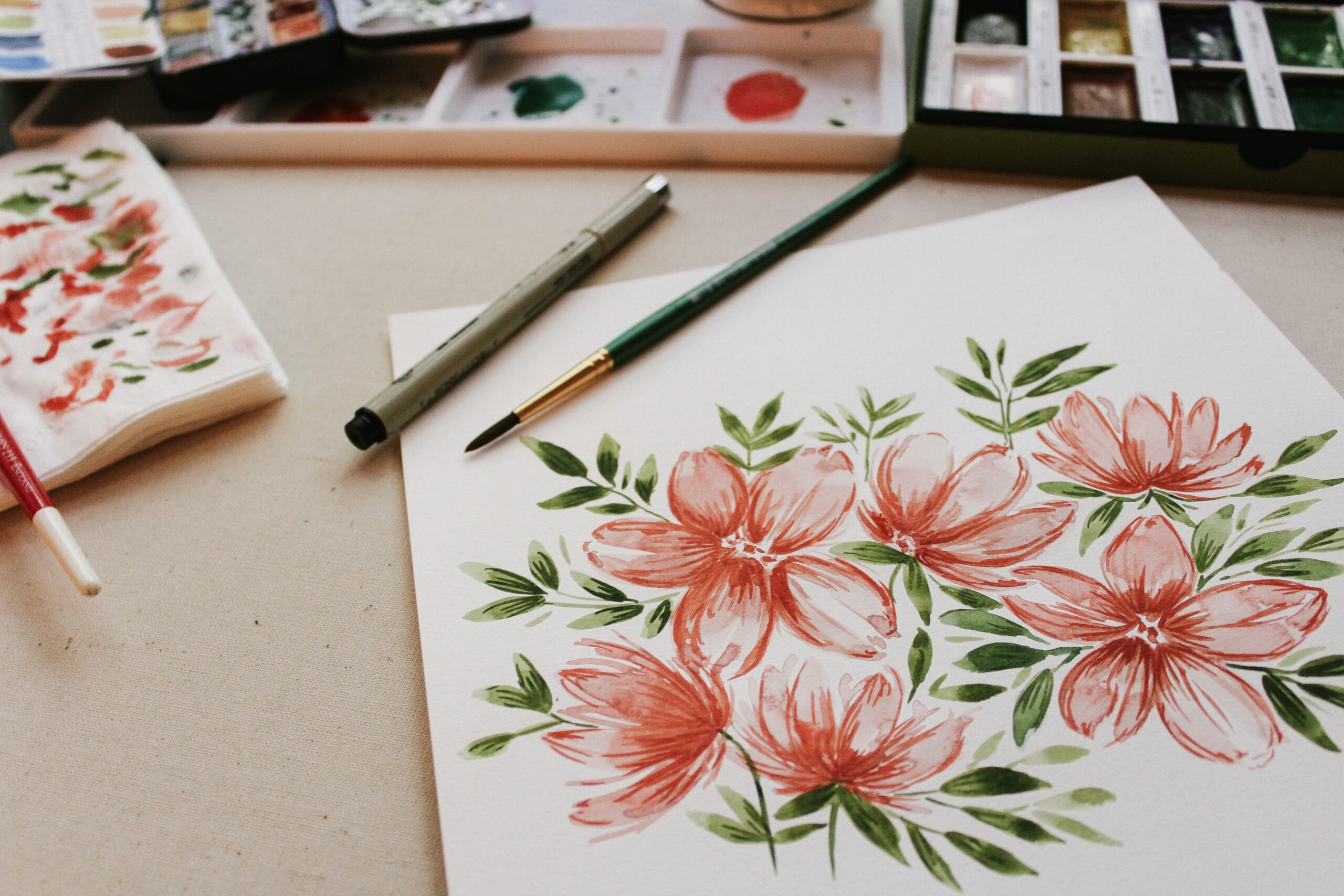In this article, you will learn essential techniques to safeguard your gouache paintings and ensure their longevity. Gouache, a popular medium known for its intense pigmentation, can be fragile and susceptible to damage if not properly protected. By following a few simple steps, you will gain the knowledge and tools necessary to preserve the vibrancy and integrity of your gouache artwork for years to come.

This image is property of images.unsplash.com.
Choosing the Right Materials
Selecting quality gouache paint
When it comes to protecting your gouache paintings, choosing the right materials is crucial. Start by selecting quality gouache paint that is inherently lightfast and permanent. This ensures that your artwork will resist fading and deterioration over time. Look for reputable brands that prioritize quality pigments and binder consistency.
Opting for acid-free and quality paper
The choice of paper is equally important in preserving your gouache paintings. Opt for acid-free paper that is specifically designed for water-based mediums. Acid-free paper prevents yellowing and deterioration, ensuring that your artwork remains vibrant and intact for years to come. Additionally, choose paper with a heavier weight to prevent warping and buckling during the painting process.
Using archival materials
Using archival materials throughout the creation process and beyond is key to protecting your gouache paintings. Archival materials are specifically designed to resist deterioration, discoloration, and other forms of damage. This includes using acid-free mounting boards, archival adhesives, and acid-free tape during framing. By utilizing these materials, you can ensure the longevity and preservation of your artwork.
Preparing the Work Surface
Cleaning and dusting the surface
Before starting any painting, whether with gouache or any other medium, it is crucial to clean and dust the work surface. This removes any debris that could affect the painting process or become trapped beneath the paint layer. Use a soft cloth or brush to gently remove any dust or dirt, ensuring a smooth and clean surface to work on.
Applying a primer or gesso
To further protect your gouache paintings, consider applying a primer or gesso to your work surface. This creates a barrier between the paint and the surface, preventing any potential damage to the underlying material. Primers and gessos also provide a consistent and absorbent surface for the gouache paint, allowing for better adhesion and color vibrancy.
Avoiding textured surfaces
When choosing a work surface for your gouache paintings, it is advisable to avoid textured surfaces. Textured surfaces can interfere with the smooth application of gouache paint and may result in uneven color distribution. Opt for surfaces that are specifically designed for gouache painting, or smooth surfaces such as hot-pressed watercolor paper or illustration board. This ensures optimal results and helps in preserving the quality of your artwork.
Proper Handling and Storage
Using clean hands or gloves
When handling your gouache paintings, it is important to use clean hands or wear gloves. Oils, dirt, and even natural skin oils can transfer to the surface of the artwork and cause damage over time. By using clean hands or gloves, you minimize the risk of transferring any unwanted substances onto your paintings.
Avoiding touching the painted surface
Although it may be tempting to touch the surface of your gouache paintings, it is best to avoid doing so. The oils, sweat, or dirt from your fingers can potentially cause smudges or discoloration on the paint surface. Even if your hands are clean, the pressure from touch can cause damage to delicate layers of gouache. It is important to handle the paintings by their edges or use appropriate tools if necessary.
Keeping paintings flat or upright
Proper storage and display of your gouache paintings can significantly impact their preservation. When not in use or during transportation, it is best to keep the paintings flat or upright. Storing paintings horizontally helps avoid any pressure or stress on the paint surface, preventing cracking or flaking. If storing paintings upright, ensure that they are securely supported and will not lean or move, which could result in damage.
Protecting paintings during transportation
When transporting your gouache paintings, take extra precautions to protect them from potential damage. Use acid-free and archival quality protective sleeves, wraps, or portfolios to shield the artwork from dust, dirt, and moisture. When packing multiple paintings, ensure they are separated and properly cushioned to avoid any contact or potential impact during transit.
Storing in a controlled environment
The environment in which you store your gouache paintings has a significant impact on their preservation. It is important to store them in a controlled environment, with stable temperature and humidity levels. Extreme fluctuations in temperature and humidity can cause paint to crack, yellow, or even mold. Aim for a temperature range of 65-75°F (18-24°C) and a relative humidity of 40-50%.
Avoiding exposure to direct sunlight
Direct sunlight can cause irreversible damage to your gouache paintings. UV rays can cause fading, discoloration, and degradation of the paint and paper. To protect your artwork, avoid displaying or storing it in areas exposed to direct sunlight. If you do choose to display your paintings, consider UV-filtering glass or acrylic to further protect against harmful UV rays.
Protective Measures When Framing
Using acid-free and archival framing materials
Proper framing is crucial for the long-term protection of your gouache paintings. When choosing framing materials, opt for acid-free and archival quality options to prevent any potential damage from acidity. Acid-free mat boards, acid-free foam core, and acid-free tapes ensure that no harmful substances leach into the artwork, causing discoloration or deterioration over time.
Using UV-resistant glass or acrylic
To provide additional protection against UV radiation, consider using UV-resistant glass or acrylic in your frames. These materials effectively block harmful UV rays while still providing clarity and visibility. UV-resistant glazing helps prevent fading and discoloration, ensuring that your gouache paintings retain their vibrancy and beauty for years to come.
Using a mat or spacer
When framing your gouache paintings, it is essential to use a mat or spacer to create space between the artwork and the glazing. By doing so, you prevent the paint surface from coming into direct contact with the glass or acrylic, reducing the risk of smudging or sticking. The mat also adds a professional and aesthetically pleasing border around your artwork.
Securing the painting in the frame
Properly securing the painting within the frame is crucial to prevent any shifting or movement that could lead to damage. Use acid-free or archival-quality mounting corners or clips to securely hold the artwork in place. Avoid using adhesive directly on the painting or using materials that could cause the paint surface to stick or be damaged when removing the artwork from the frame.
Hanging paintings away from direct sunlight
Once your gouache paintings are framed, it is important to consider their placement for display. Hang them in areas away from direct sunlight to prevent any potential fading or discoloration caused by UV exposure. Additionally, avoid hanging paintings in spaces prone to high humidity, such as bathrooms or kitchens, as moisture can damage the artwork over time.

This image is property of images.unsplash.com.
Creating a Varnish Barrier
Allowing paintings to fully dry
Before applying a varnish to your gouache paintings, ensure that they are fully dry. Gouache paint may take longer to dry compared to other mediums, but it is crucial to allow sufficient drying time to prevent any damage or interference with the varnishing process. Check that the paint layers are completely dry to the touch before proceeding.
Using a removable varnish
When applying a varnish to protect your gouache paintings, opt for a removable varnish. Removable varnishes provide a protective barrier without permanently altering the appearance or characteristics of the paint. The varnish can be easily removed or replaced if necessary, allowing for future restoration or revarnishing without damaging the underlying artwork.
Applying the varnish with care
When applying varnish to your gouache paintings, it is important to do so with care and precision. Use a soft, clean brush to apply the varnish in even and controlled strokes, following the manufacturer’s instructions. Avoid excessive application, as this can result in pooling or uneven distribution of the varnish. Allow the varnish to dry completely before moving or displaying the artwork.
Handling and Displaying Finished Paintings
Using clean and dry hands or gloves
When handling your finished gouache paintings, always use clean and dry hands or wear gloves. Moisture from damp hands can potentially transfer onto the surface of the artwork, leading to smudging or other damage. Using gloves provides an extra layer of protection against oils and dirt from the skin.
Avoiding contact with moisture
Moisture, such as water or humidity, can have detrimental effects on the quality of your gouache paintings. Avoid placing them in areas prone to moisture accumulation, such as basements or near bathroom fixtures. Additionally, when displaying artwork, keep it away from sources of moisture, such as humidifiers or areas exposed to steam.
Avoiding friction or pressure
To protect the delicacy and integrity of your gouache paintings, avoid any unnecessary friction or pressure. Do not place heavy objects on top of the paintings, and ensure that they are handled and displayed in a way that minimizes the risk of accidental damage. Using a protective cover or case during transportation can also help protect against potential friction or pressure.
Keeping paintings away from smoke and pollutants
Smoke, pollutants, and other airborne contaminants can negatively affect the appearance and longevity of your gouache paintings. Keep them away from areas where smoking occurs or where there is consistent exposure to pollutants. Regularly clean the surface of the paintings to remove any particles that may have settled on the paint layer.

This image is property of images.unsplash.com.
Cleaning and Maintenance
Using gentle cleaning techniques
When it comes to cleaning your gouache paintings, it is important to use gentle techniques that minimize the risk of damaging the surface. Use a soft brush or a microfiber cloth to gently remove any dust or dirt. Avoid using water or any cleaning solutions unless absolutely necessary and seek professional advice for specific cleaning needs.
Avoiding excessive scrubbing
When cleaning your gouache paintings, it is crucial to avoid excessive scrubbing. Gouache paint can be delicate, and aggressive scrubbing can remove or damage the paint layers. Instead, opt for gentle brushing or wiping motions to remove surface dust or dirt. If there are stubborn stains or marks, consult a professional conservator for appropriate cleaning methods.
Consulting a professional for restoration
If you notice significant damage, fading, or deterioration on your gouache paintings, it is advisable to consult a professional for restoration. Restoration experts have the knowledge, experience, and specialized tools to safely and effectively restore your artwork to its original condition. Attempting restoration without professional guidance can lead to further damage and permanent loss of your artwork.
Protection against Humidity and Moisture
Storing paintings in a humidity-controlled environment
Humidity can be one of the most damaging factors for gouache paintings. To protect your artwork, store it in a humidity-controlled environment. Use a dehumidifier or humidifier to maintain a stable humidity level specific to the preservation needs of gouache paintings. Monitoring the humidity and regularly checking for any fluctuations can help prevent damage caused by moisture.
Using moisture-absorbing materials
To further safeguard your gouache paintings against humidity and moisture, consider using moisture-absorbing materials in storage areas. Silica gel packets or humidity-absorbing agents can help control moisture levels and prevent excessive humidity buildup. Place these materials near your stored artwork to help maintain stable humidity conditions.
Avoiding exposure to areas prone to water damage
When deciding where to display or store your gouache paintings, avoid areas that are prone to water damage. This includes areas near pipes, sinks, windows prone to leaking, or basements with a history of flooding. By keeping your artwork away from potential water sources, you reduce the risk of accidental damage and deterioration caused by moisture.

Protection against Dust and Dirt
Keeping paintings covered when not displayed
When not displaying your gouache paintings, it is essential to keep them covered to protect against dust and dirt accumulation. Use acid-free and archival quality protective sleeves, covers, or portfolios designed specifically for artwork. These covers serve as an additional layer of defense against environmental factors that can harm your paintings.
Regularly dusting the surface with a soft brush
To maintain the quality and appearance of your gouache paintings, regularly dust the surface with a soft brush. This helps remove any dust or debris that may have settled on the paint layer. Opt for a brush specifically designed for delicate surfaces to avoid any potential damage or scratching.
Using protective covers for transportation
When transporting your gouache paintings, it is crucial to use protective covers specifically designed for shipping or transportation. These covers not only shield your artwork from dust and dirt but also provide padding and protection against potential impact or friction during transit. Invest in durable and appropriate covers to ensure the safe transportation of your artwork.
Protecting Paintings from Accidental Damage
Keeping paintings away from children and pets
To protect your gouache paintings from accidental damage, it is important to keep them away from children and pets. Both children and pets may unintentionally damage or knock over artwork, leading to irreversible harm. Display or store your paintings in areas where they are not easily accessible to small children or curious pets.
Avoiding placement in high-traffic areas
To minimize the risk of accidental damage, avoid placing your gouache paintings in high-traffic areas or near doorways. High-traffic areas increase the chances of accidental collisions or bumps, potentially causing your artwork to fall or become damaged. Choose a display location that minimizes the risk of accidental damage.
Using a sturdy easel or stand during work
When working on your gouache paintings, use a sturdy easel or stand to support the artwork. This ensures stability and minimizes the risk of accidental tipping or falling during the painting process. Invest in a quality easel or stand designed for the specific size and weight of your artwork to provide a secure and stable working surface.




